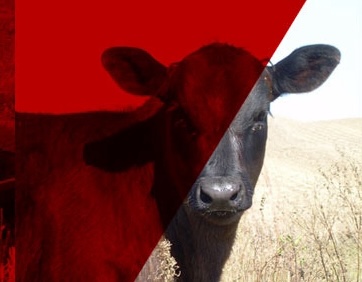A recent research study conducted by Kansas State University examined the impacts of acclimating yearling heifers to handling during the estrus synchronization and timed artificial insemination (AI) process.
Estrus synchronization and timed artificial insemination are two technologies that are utilized in the beef industry to increase the number of heifers that conceive early in the breeding season and to utilize superior genetics to enhance cattle performance. For these technologies to have the intended result, heifers need to conceive and maintain that pregnancy until calving. Prior research has shown that heifers with excitable temperaments and elevated plasma cortisol concentrations, which are an indicator of stress, may have decreased conception rates to timed AI when compared to herd mates that are calmer.
In this study, 622 heifers from eight herds were utilized to investigate the impacts of handling and acclimation practices during estrus synchronization and timed AI on heifer temperament and conception rates. The heifers were evaluated for reproductive tract score, chute score, and exit velocity. Then the heifers at each location were divided representatively into two similar sized groups. The treatment group of heifers was acclimated to the facility and to human handling during the estrus synchronization and timed AI events. The other group, which served as the control, did not receive additional handling and acclimation.
All heifers were administered the 7-day CO-Synch + CIDR estrus synchronization protocol and were artificially inseminated with timed breeding. The CIDR was inserted on day 0 of the study, removed on day 7, and timed AI occurred on day 10. Before each of the estrus synchronization and timed AI handling events, the heifers being acclimated to handling were sorted off from the control heifers and familiarized to the handling facility by moving them through the tub, alley, and chute without restraint. After the acclimation event, these heifers were then put back with heifers acting as the control group, and all heifers were then returned to the facility for actual application of the estrus synchronization and timed AI.
To assess temperament, a chute score and exit velocity were collected for all heifers on day 0, 7, and 10 of the study when the heifers were administered the estrus synchronization protocol and timed AI. Additionally, blood samples were collected from 120 of the heifers from 2 locations, to measure plasma cortisol concentrations on day 0, 7, and 10 of the study. Estrus detection patches were placed on the heifers on day 7 when the CIDR device was removed, and the patches were then scored on day 10 when timed AI occurred.
Pregnancy diagnosis took place between 40 and 91 days after breeding using transrectal ultrasonography. Throughout the estrus synchronization and timed AI events, the exit velocities of all the heifers decreased as the protocol progressed, but did not differ based on how the heifers were treated. There were also no differences seen between the two groups for estrus patch scores. There were no differences in cortisol concentrations between the heifers that went through the acclimation process and the control group. However, the heifers experiencing the acclimation treatment did have significantly decreased chute scores on day 7 and day 10 when compared to the control heifers. The heifers experiencing acclimation also had greater conception rates to timed AI, 54% versus 45% for the control heifers.
Results from this study indicated that there may be benefits to acclimating heifers to human handling and the facility when working cattle for the application of the 7-day CO-Synch + CIDR estrus synchronization and timed AI protocol. In this study, acclimating heifers led to improved chute scores, indicating a potential improvement in temperament, and resulted in effectively improving timed AI conception rates.
For more on this research project, please see the complete study at https://go.unl.edu/ksu_heifer_acclimation_timed_ai_study
Article by Aaron Berger, Nebraska Extension Educator.
Topics covered:
Reproduction & genetics, Artificial insemination & estrus synchronization

